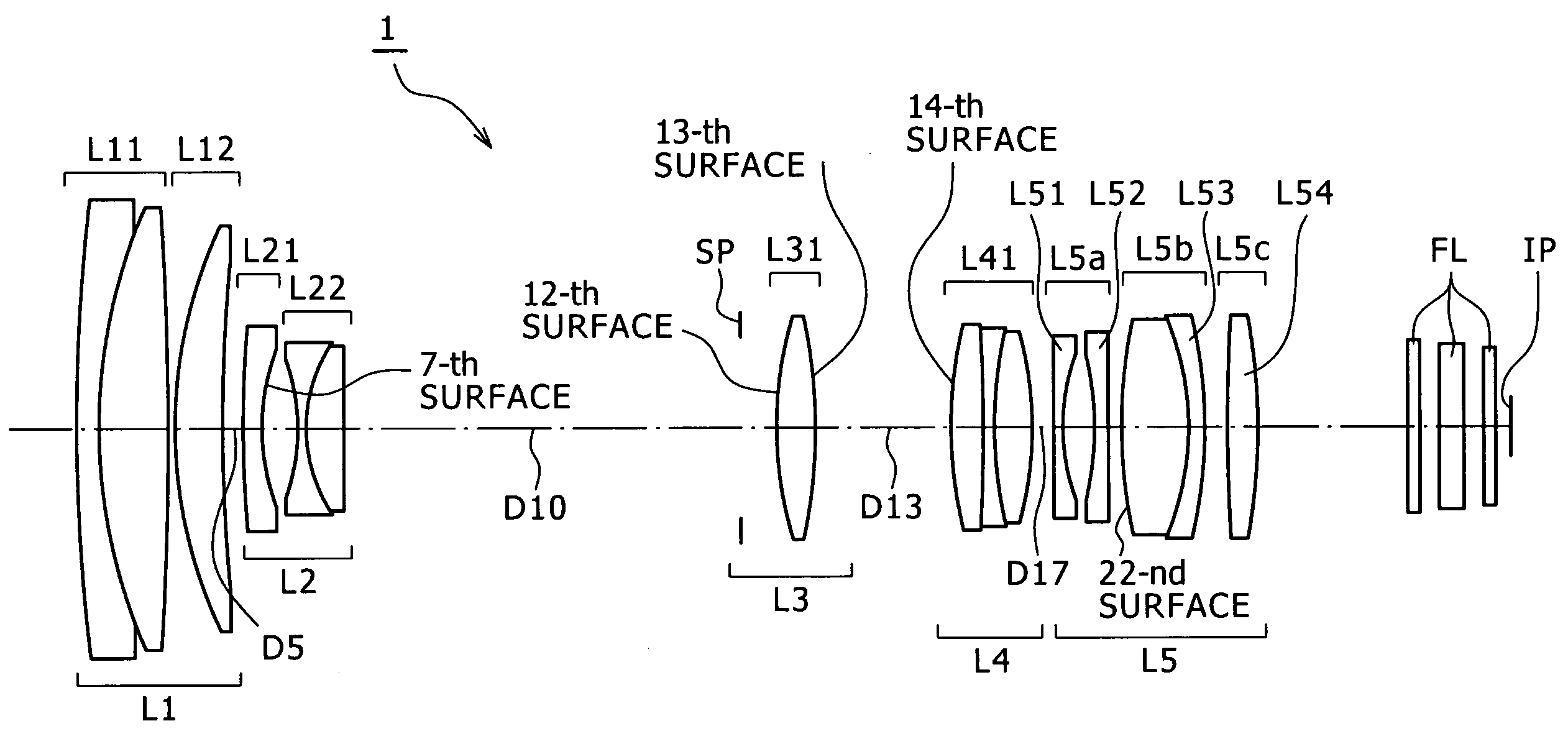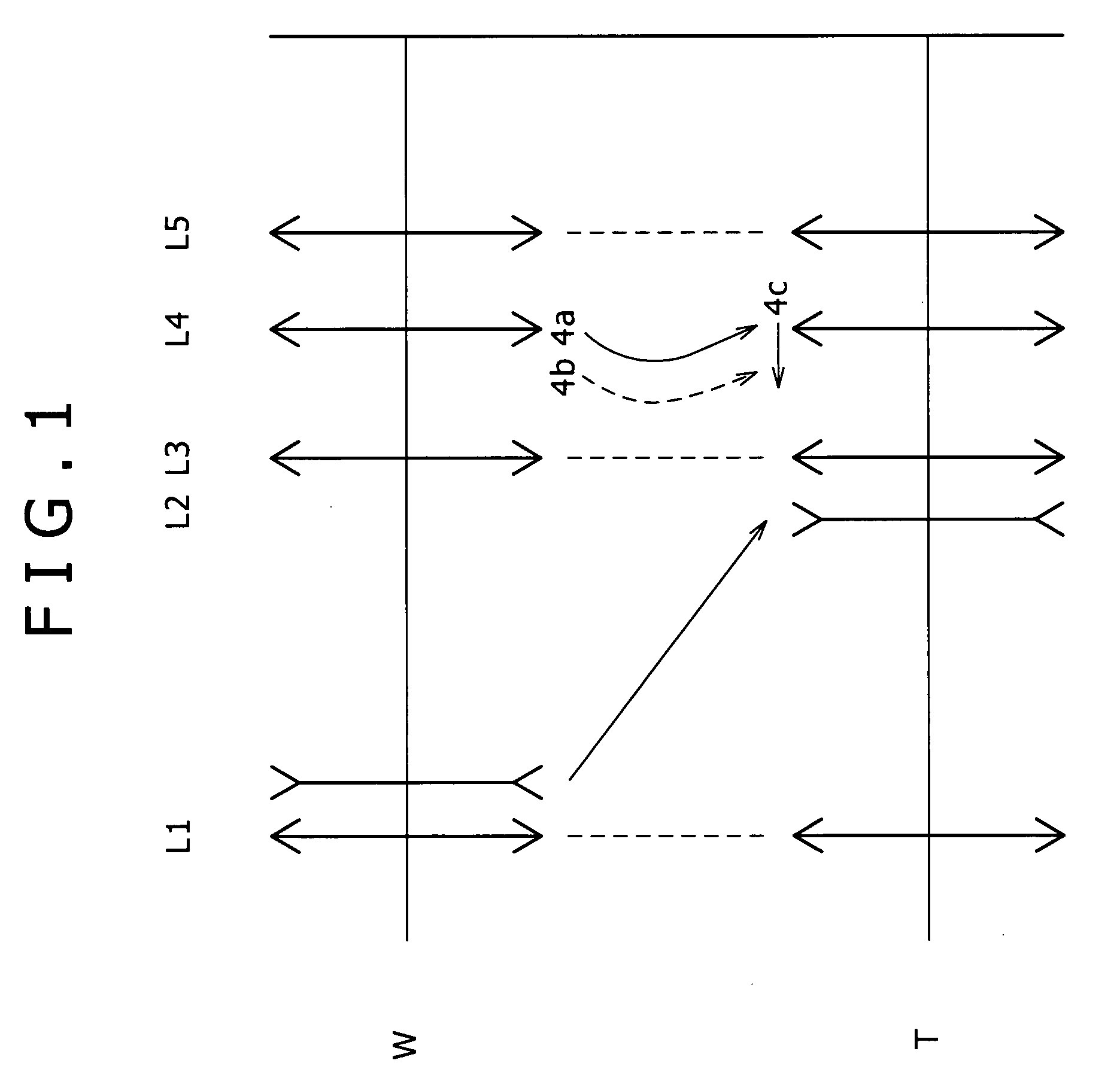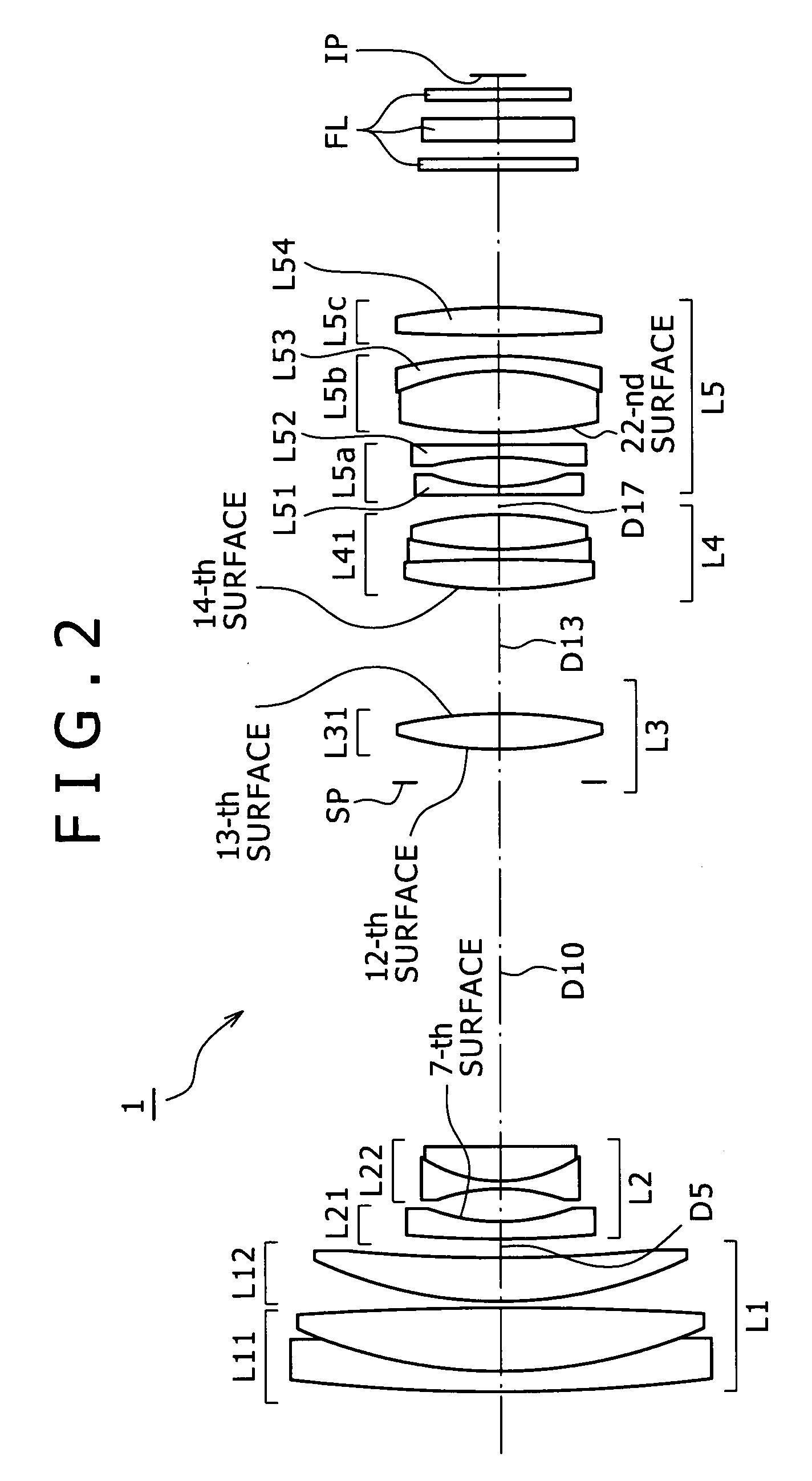Zoom lens and imaging apparatus
a zoom lens and imaging technology, applied in the field of zoom lenses and imaging apparatuses, can solve the problems of zoom lenses, affecting the image quality of the image, and the refractive power of the negative part group is more intensive, so as to reduce the degradation of imaging performance
- Summary
- Abstract
- Description
- Claims
- Application Information
AI Technical Summary
Benefits of technology
Problems solved by technology
Method used
Image
Examples
first embodiment
[0053]FIG. 2 shows a lens configuration of a zoom lens 1 according to the present invention. The first lens group L1 is composed of, in the order of the object-to-image direction, a cemented lens L11 made up of a meniscus-shaped negative lens having a convex surface facing toward the object and a positive lens having a convex surface facing toward the object, and a positive lens L12 having a convex surface facing toward the object. The second lens group L2 is composed of, in the order of the object-to-image direction, a meniscus-shaped negative lens L21 having a concave surface facing toward the image and whose image-side surface is of aspherical shape, and a cemented lens L22 made up of a biconcave lens and a biconvex lens. The third lens group L3 is composed of a convexo-convex lens L31 whose opposite surfaces are of aspherical shape. The fourth lens group L4 is composed of a three-cemented lens L41 made up of, in order and in the object-to-image direction, a biconvex lens, a bico...
embodiment 1
[0055]With respect to the zoom lens 1, the image-side surface (the seventh surface) of the meniscus-shaped negative lens L21 included in the second lens group L2, the opposite surfaces (the twelfth and the thirteenth surfaces) of the biconvex lens L31 included in the third lens group L3, the object-side surface (the fourteenth surface) of the three-cemented lens L41 included in the fourth lens group L4 and the object-side surface (the twenty-second surface) of the fifth-b lens group L5b included in the fifth lens group L5 are of aspherical shape. As such, the fourth-, the sixth-, the eighth- and the tenth-order aspherical coefficients A, B, C and D of the above surfaces with respect to the numerical embodiment 1 are listed in Table 2 together with their conic constants (κ). It is noted that in Table 2 and the subsequent aspherical coefficient tables, “E−i” is an exponential notation to a base ten number, in other words, “10−i”, specifically, “0.12345E−05” represents “0.12345×10−5”, ...
second embodiment
[0063]FIG. 9 shows a lens configuration of a zoom lens 2 according to the present invention. A first lens group L1 is composed of, in the order of the object-to-image direction, a cemented lens L11 made up of a meniscus-shaped negative lens having a convex surface facing toward the object and a positive lens having a convex surface facing toward the object, and a positive lens L12 having a convex surface facing toward the object. A second lens group L2 is composed of, in the order of the object-to-image direction, a meniscus-shaped negative lens L21 having a concave surface facing toward the image, and a cemented lens L22 made up of a biconcave lens and a biconvex lens. A third lens group L3 is composed of a biconvex lens L31 whose object-side surface is of aspherical shape. A fourth lens group L4 is composed of a three-cemented lens L41 made up of, in the order of the object-to-image direction, a biconvex lens, a biconcave lens and a biconvex lens and whose object-side surface is o...
PUM
 Login to View More
Login to View More Abstract
Description
Claims
Application Information
 Login to View More
Login to View More - R&D
- Intellectual Property
- Life Sciences
- Materials
- Tech Scout
- Unparalleled Data Quality
- Higher Quality Content
- 60% Fewer Hallucinations
Browse by: Latest US Patents, China's latest patents, Technical Efficacy Thesaurus, Application Domain, Technology Topic, Popular Technical Reports.
© 2025 PatSnap. All rights reserved.Legal|Privacy policy|Modern Slavery Act Transparency Statement|Sitemap|About US| Contact US: help@patsnap.com



